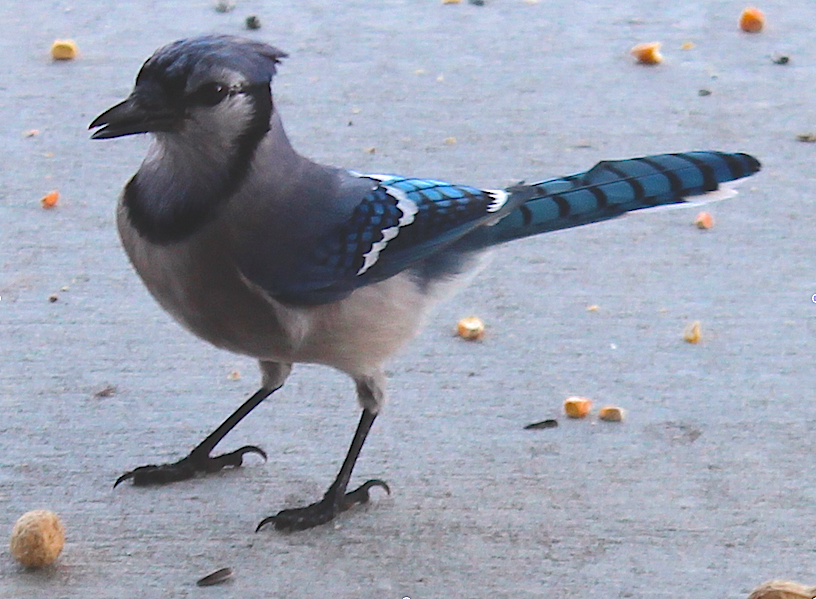I think in colors. My thinking colors have sound and movement. When I hear spoken words my neurology automatically goes for the match – a match for the words I hear to a familiar concrete picture of something in the world outside my skin or to an internal picture I have stored in my memory..
When I was a girl I heard the saying, “I got the world by the tail.” Immediately, the matching pictures of my experience of the world popped up for me to see. I found the best match and promptly assigned the words, “I got the world by the tail” to mean the interaction of the sunlight and misty water particles I could see rising up from the earth’s surface whenever I was outside.
The phenomenon of mist rising from the earth became the visual match for the new words I imagined to be about the world’s tail. For most of my life I thought this literally was this early morning mist was indeed the earth’s tail. I thought that people were somehow able to physically grab onto this tail and when they did so they indeed had the world by the tail! To my literalness this made perfect logical sense.
I had always noticed the sun sparkles and the interaction of the sun sparkles with the earth mist. In fact, as a small child, they were often more salient to me than the people in my world. Most times I preferred them to people. I had often tried to touch these sparkles, but now I had a new mission. I wanted to actually catch this tail so I too might have the world by its tail! As a decades older person, a few years ago I used acrylic paints to paint some of these misty tails. Here is one example with many more at my website www.judyendow.com
Painting is Earth Tail Mist
available in packs of 5 greeting cards
and 3 print sizes
under the Art Store tab at
www.judyendow.com
Points to Ponder:
a. Rote Repetition is NOT Evidence of Comprehension!
People with autism are often visual thinkers. It is not something we decide, but rather the way our brain handles information. We do not know when we are little that most other people think with words rather than with colors and pictures. This makes it difficult in school as delivery of information quickly becomes language-based as pictures drop away after the first few years.
This dramatic change in materials in the United States occurs at the third grade level when text based instruction becomes predominant. For me it was hard to think about or understand ideas that were not concrete ideas. Basically, if my brain could not translate the words I heard into a concrete picture in a few seconds, as a young child I would not be able to pick up the meaning of the words being spoken. Even though I did not understand the meaning I was able to repeat the words. For example, when prompted I could repeat the teacher’s instruction to use quiet voices even though I had no idea what the words meant because no picture popped up in my head to equal those words.
Is your youngster a visual thinker?
Do you use concrete language along with pictures as needed?
b. Non-compliance or Comprehension Constraint?
When autistics are able to recite your instructions or repeat an admonition and then do not follow the instruction or admonition do not assume willful non-compliance. Instead, check for comprehension. If the autistic is a visual thinker ask him to draw or show you what the instructions or rule looks like. If a visual thinker cannot do this, he likely does not comprehend the words you are speaking even though he may be able to repeat them quite accurately. Children with ASD have been shown to perform basically normal for age in word decoding, but lower than age expectation in reading comprehension. (Minshew et al, 1994, Myles et al, 2002, Nation et al, 2006, Newman et al, 2007, Asberg et al, 2008, Asberg et al, 2010)
When your student’s behavior has the appearance of willful noncompliance do you stop to ascertain comprehension before ascribing meaning to the behavior?
How will you evaluate your student’s comprehension or lack of comprehension when his behavior looks like non-compliance?
c. Teach Idioms and Other Hidden Curriculum
People with autism don’t automatically pick up the meaning of idioms. However, they are able to learn the meanings of idioms by direct teaching. “I’ve got the world by the tail” is an example of an idiom. Sometimes an autistic will automatically assign a literal meaning to an idiom and then assume everybody else shares that literal meaning because it makes sense to him! That is what I did in the above example using the idiom “I’ve got the world by the tail.”
How will you teach the meanings of idioms and other kinds of assumed social understanding, i.e. hidden curriculum?
Do you check for shared meaning when it comes to idiom usage and understanding?
BOOKS BY JUDY ENDOW
Endow, J. (2019). Autistically Thriving: Reading Comprehension, Conversational Engagement, and Living a Self-Determined Life Based on Autistic Neurology. Lancaster, PA: Judy Endow.
Endow, J. (2012). Learning the Hidden Curriculum: The Odyssey of One Autistic Adult. Shawnee Mission, KS: AAPC Publishing.
Endow, J. (2006). Making Lemonade: Hints for Autism’s Helpers. Cambridge, WI: CBR Press.
Endow, J. (2013). Painted Words: Aspects of Autism Translated. Cambridge, WI: CBR Press.
Endow, J. (2009). Paper Words: Discovering and Living With My Autism. Shawnee Mission, KS: AAPC Publishing.
Endow, J. (2009). Outsmarting Explosive Behavior: A Visual System of Support and Intervention for Individuals With Autism Spectrum Disorders. Shawnee Mission, KS: AAPC Publishing.
Endow, J. (2010). Practical Solutions for Stabilizing Students With Classic Autism to Be Ready to Learn: Getting to Go. Shawnee Mission, KS: AAPC Publishing.
Myles, B. S., Endow, J., & Mayfield, M. (2013). The Hidden Curriculum of Getting and Keeping a Job: Navigating the Social Landscape of Employment. Shawnee Mission, KS: AAPC Publishing.
OTHER REFERENCES
Asberg, J., Dahlgren, S. O. and Dahlgren Sandberg, A.( 2008). Basic reading skills in high functioning Swedish children with autism spectrum disorders or attention disorder. Research in Autism Spectrum Disorders, 2, 95-109.
Asberg, J., Kopp, S., Ber-Kelly, K., & Gilberg, C. ( 2010) Reading cop Reading comprehension, word decoding and spelling in girls with autism spectrum disorders (ASD) or attention-deficit/hyperactivity disorder (AD/ HD): performance and predictors. International Journal of Language and Communication Disorders, 45, 61-71.
Minshew, N. J., Goldstein, G., Taylor, H. G. and Siegel, D. J. (1994) Academic achievement in high functioning autistic individuals. Journal of Clinical and Experimental Neuropsychology, 16, 261–270.
Myles, B. S., Hilgenfeld, T. D., Barnhill, G. P., Griswold, D. E., Hagiwara, T., & Simpson, R. L. (2002). Analysis of reading skills in individuals with Asperger Syndrome. Focus on Autism and Other Developmental Disabilities, 17(1), 44-47.
Nation, K., Clarke, P., Wright, B. J. and Williams, C. (2006) Patterns of reading ability in children with autism spectrum disorders. Journal of Autism and Developmental Disorders, 36, 911 – 919.
Newman, T. M., Macomber, D., Naples, A. J., Babitz, T., Volkmar, F. and Grigorenko, E. L. (2007) Hyperlexia in children with autism spectrum disorder. Journal of Autism and Developmental Disorders, 37, 760-774.
Originally written for and published by Ollibean on March 7, 2016.
To leave a comment at the end of this blog on the Ollibean site click here.




